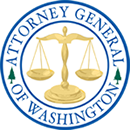Nick Brown
AGO 1951 No. 51 -
PASCO-KENNEWICK BRIDGE.
Construction of piers for the Pasco-Kennewick bridge may be accomplished from the reimbursable revolving fund and the highway department, and that fund reimbursed from the proceeds of the bond issue authorized by chapter 121, Laws of 1951, if and when such money becomes available.
- - - - - - - - - - - - -
May 28, 1951
Honorable William A. Bugge
Director of Highways
Olympia, Washington Cite as: AGO 51-53 No. 51
Dear Sir:
Receipt is acknowledged of your letter of May 10, 1951, in which you inquire whether, if expenditures are made now for the construction of piers for the new Pasco-Kennewick bridge from the regular appropriation to your department, such expenditures can be absorbed from the proceeds of the highway bond issue authorized by chapter 121, Laws of 1951, when and if such proceeds become available.
It is our conclusion that expenditures made now for the construction of the piers of the Pasco-Kennewick bridge from the appropriation for reimbursable expenditures authorized by section 17, chapter 273, Laws of 1951, may be reimbursed from the proceeds of the bond issue authorized by chapter 121, Laws of 1951, when and if such proceeds become available.
ANALYSIS
Chapter 121, Laws of 1951, authorizes a bond issue in the sum of $66,703,625 to finance a number of highway projects. Included among these is "construction of an adequate bridge from Pasco to Kennewick." The act in section 12 (2) allocates "$6,500,000 of the total issue for the construction of a highway bridge from Pasco to Kennewick." The legislature has thus contemplated that the cost of the Pasco-Kennewick bridge shall be borne by the proceeds of the bond issue. In order to make the proceeds of the bond issue available, section 15, chapter 121, Laws of 1951, makes the following appropriation:
[[Orig. Op. Page 2]]
"There is appropriated from the motor vehicle fund the sum of sixty-six million seven hundred three thousand six hundred and twenty-five dollars, or so much thereof as may be necessary, to carry out the provisions of this chapter, but no money shall be available under this appropriation from said fund unless a like amount of the bonds provided for herein are sold and the money derived deposited to the credit of such fund."
It will thus be seen that the appropriation under chapter 121, Laws of 1951, is not yet available since the bonds have not been sold and will not be sold until a case now pending in the Supreme Court testing the constitutionality of the act has been decided.
We understand from your letter that it was originally intended this work be done on the bridge during the 1951-1953 biennium even without the bond issue, and that an item of $2,857,500 was included in the construction budget for this purpose. Your letter indicates that it is necessary to do this work during the period of low water and it is important that these piers be constructed before the McNary Pool will be formed in 1953 which will have an adverse effect on pier construction due to the raising of the river level. There are within chapter 273, Laws of 1951, appropriations which will adequately cover expenditures for the construction of these piers, since section 13 makes an appropriation of $63,702,805 which is available for "any and all proper highway purposes not specifically set forth in other sections of this act." Also, section 17 appropriates $27,450,000 for "any other expenditures of any kind by the Department of Highways upon public highways for which reimbursement is anticipated, including inventories and salary suspense." We are advised that the amount allocated by chapter 121, Laws of 1951, for the Pasco-Kennewick bridge is sufficient to cover the entire cost thereof and there is no other specific appropriation in chapter 273, Laws of 1951, for the purpose of that bridge.
It is our opinion that the intention of the legislature was shown by these acts to be that the cost of the Pasco-Kennewick bridge should be borne from the bond issue. An expenditure made at this time for the construction of the piers for this bridge, we believe, may be considered one for which reimbursement may be anticipated. Consequently, we see no objection to the financing of the [[Orig. Op. Page 3]] construction of these piers now from the revolving fund appropriated by section 17, chapter 273, Laws of 1951, and the reimbursement of that revolving fund from the appropriation made by chapter 121, Laws of 1951, when and if it becomes available.
Very truly yours,
SMITH TROY
Attorney General
LYLE L. IVERSEN
Assistant Attorney General

 Other Languages
Other Languages